This post may contain affiliate links.
Kashk is a traditional Middle Eastern dairy product that’s used in various dishes including Ash reshteh and Kashke Bademjan. It’s made by simmering yogurt until it’s tangy and reaches a very dense consistency. This homemade method is both simple and rewarding.
Whether you’re familiar with kashk or new to it, my recipe will guide you through creating this versatile ingredient right in your kitchen.
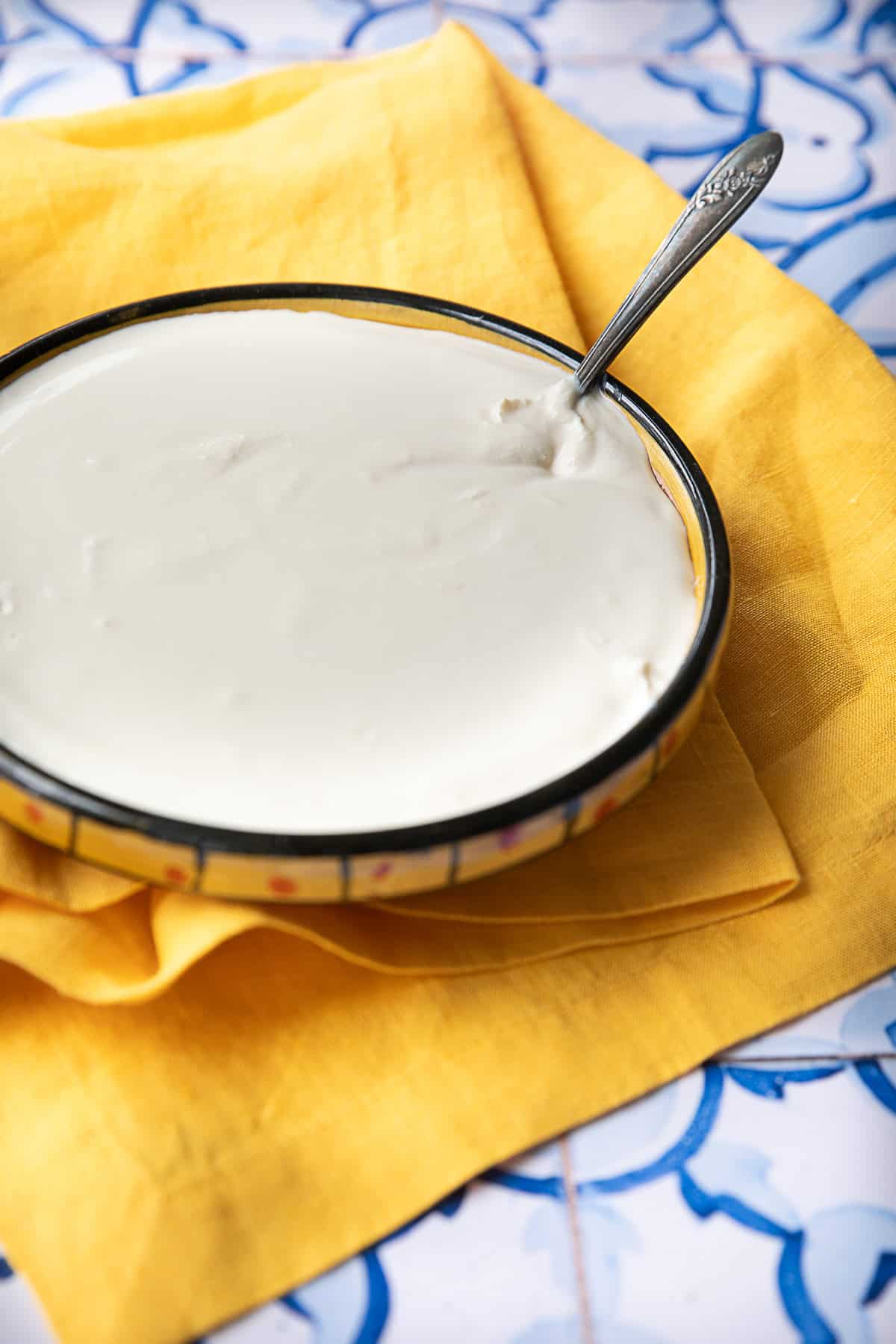
Similar to what is known as jameed in Arab cuisine, kashk is a staple in quite a few popular Persian dishes from Kashke Bademjan (Persian Eggplant Dip), a dish you’ll find in almost every authentic Persian restaurant, to Persian Eggplant Soup (Ash-e Bademjan and Ash Reshteh among others.
This kashk recipe calls for 2 ingredients and it’s easy to follow. While it takes a few hours for homemade kashk to get ready, it’s a really easy procedure that doesn’t require any specific cooking skill or kitchen tool.
Table of Contents
Recipe Highlights: Homemade Kashk
Cultural Influence: Traditional Iranian and Middle Eastern
Primary Cooking Technique: Simmering and blending
Dominant Flavor Profile: Tangy and creamy
Skill Level Required: Beginner-friendly
What is Kashk?
Kashk, also known as qurut, jameed and chortan (in Armenian) is a class of fermented dairy products made of cooked and dried yogurt, which gives it a long shelf life. They are usually shaped into balls or chunks and sold in bazaars alongside spices. These can be mixed water to turn into a paste and then used in various dishes to add richness and depth of flavor.
Making kashk was a form of preserving yogurt in the olden days. In the modern method, the yogurt in blended and mixed with some water, then simmered until it’s very tangy, dense an beige in color. Then it’s strained and blended with salt and optionally water to make this creamy tangy product.
Some would suggest letting the yogurt sit outside for a couple of days to become sour prior to cooking. However, I don’t find this step necessary with the yogurt found in the US because when cooked, it becomes pretty sour. I
Star Ingredient: Whole Milk Yogurt
Whole milk yogurt is the foundation of kashk, providing its rich, creamy texture and tangy flavor. The high-fat content ensures a smooth end product.
A useful tip is to always use full-fat yogurt for the best consistency and taste. As it simmers, the yogurt undergoes a transformation, developing a depth of flavor that is tangy, which works well with the salt added later.
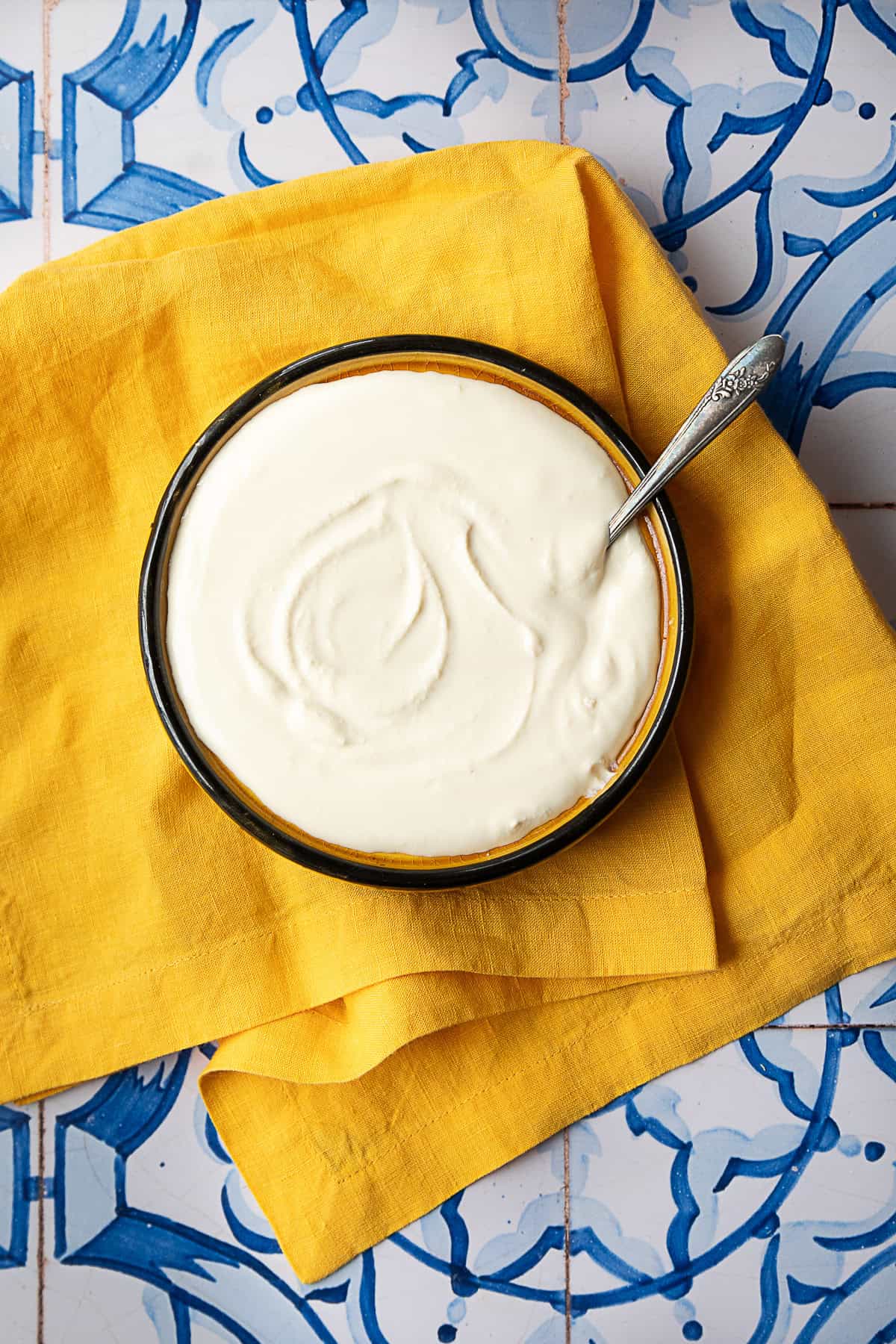
How to Make Kashk
Step 1
Mix the whole milk yogurt with 2 cups of water in a large pot.
Bring the mixture to a simmer over medium-high heat, stirring constantly to prevent sticking. This takes about 20-30 minutes and the yogurt will begin to separate and curdle, which is completely normal.


Step 2
Reduce the heat to medium and let the mixture simmer for about 2 hours and 30 minutes. Stir occasionally to ensure even cooking. The mixture will start to come together again.

Step 3
Next, increase the heat to medium-high and cook for an additional 30 minutes, stirring frequently. The mixture should turn a beige color and thicken.

Step 4
Turn off the heat and let the mixture cool for 30 minutes. After cooling, pour the kashk into a nut milk bag or a cheesecloth and strain. Squeeze out as much liquid as possible. You should be left with a thick, lump-like mixture.



Step 5
Finally, you transfer the strained kashk to a blender or food processor.
Add ½ cup of water and 1 tsp of salt. Blend until the mixture is smooth and creamy. Adjust salt to taste.


What to Know About the Kashk Strained Liquid (Whey)
When making kashk, you’ll notice a significant amount of liquid being strained out during the process. This liquid is a byproduct of the yogurt transformation and has its own unique properties and uses. Here’s what you need to know about it.
What is the Excess Liquid?
The liquid strained from the kashk is essentially whey, a byproduct of curdled and cooked yogurt. Whey is rich in protein, making it a valuable addition to your diet. It also contains vitamins and minerals like calcium, potassium, and B vitamins.
Uses for the Whey
- Baking:
- Whey can be used as a substitute for water or milk in bread. It adds a subtle tangy flavor and extra protein to baked goods.
- Smoothies:
- Add a splash of whey to your morning smoothie for an extra boost of nutrients and a slight tang.
- Soups and Stews:
- Use whey as a base for soups and stews. It can enhance the flavor while adding some additional protein.
- Marinades:
- Whey’s slight acidity makes it an excellent ingredient for marinades, helping to tenderize meat while infusing it with flavor.
- Fermentation:
- Use whey to kickstart the fermentation process for homemade sauerkraut, kimchi, or other fermented vegetables.
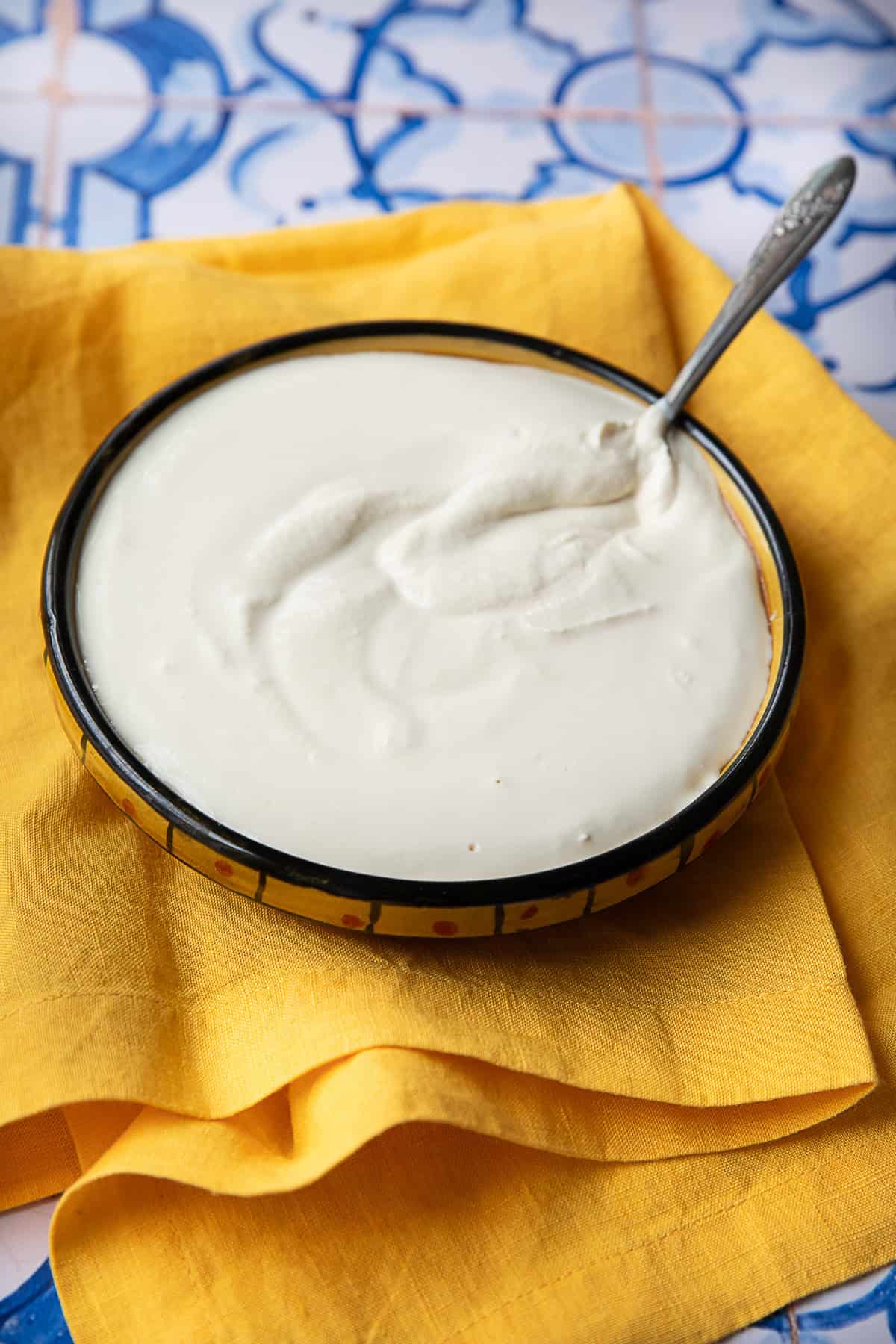
How to Store Whey
- Refrigeration:
- Store the whey in an airtight container in the refrigerator for up to one week.
- Freezing:
- Freeze whey in ice cube trays and transfer the cubes to a ziplock bag for longer storage. This way, you can easily add a cube or two to recipes as needed.
How To Use Kashk
There are several ways to use kashk in your recipes. You can use it to garnish or thicken soups. It’s also used widely in Iran to make kashke bademjan, a popular eggplant dip served with bread such as lavash.
Notes For Making Kashk or Jameed at Home
Tips for Preparation
- Quality Yogurt: Use high-quality, full-fat whole milk yogurt. The richness of the yogurt directly impacts the texture and flavor of the kashk.
- Consistent Stirring: Stir continuously while bringing the yogurt mixture to a simmer to prevent it from sticking to the bottom of the pot and burning. Use a wooden spoon or a heat-resistant spatula or whisk for best results.
- Temperature Control: Maintain medium heat during the simmering process to avoid scorching the yogurt. Consistent heat is crucial for the proper transformation of the yogurt.
Tricks for Better Results
- Use a Heavy-Bottom Pot: A heavy-bottom pot distributes heat evenly and helps prevent hot spots that can burn the yogurt.
- Nut Milk Bag for Straining: Use a nut milk bag or a cheesecloth for efficient straining. It’s durable and fine enough to capture all the solid parts, ensuring a smooth kashk.
- Blend for Creaminess: After straining, blend the kashk with water and salt in a good quality food processor to achieve a smooth and creamy texture. Adjust the water amount for your desired consistency.
Ensuring Fool-Proof Results
- Monitor the Color: Keep an eye on the color change during cooking. The mixture should turn a beige hue, indicating it’s ready to be strained.
- Squeeze Well: When using the nut milk bag, ensure you squeeze out as much liquid as possible. This helps achieve the correct consistency for the kashk.
- Cool Properly: Allow the kashk to cool for about 30 minutes after cooking before straining. This makes the process easier and ensures a smoother texture.

How to Store Kashk
Store liquid kashk in a clean, airtight jar in the refrigerator. It stays fresh for up to two weeks.
For longer storage, freeze it in ice cube trays and then transfer to a freezer-safe bag for easier access. Thaw in fridge overnight or at room temperature.
You can also store dry kashk (before mixing it with water) by mixing it with salt and then freezing it in ice cube trays. Once frozen, transfer to a freezer safe bag and keep frozen. When you’re ready to use, mix a few cubes with hot water and stir to reach the preferred consistency.
Frequently Asked Questions
Kashk can be stored in an airtight jar in the refrigerator for up to two weeks. Ensure it is well-sealed to maintain its freshness.
Yes, you can freeze kashk. Pour the kashk into ice cube trays, freeze until solid, then transfer the cubes to a Ziplock bag. Thaw in the refrigerator or at room temperature as needed.
The kashk is ready to be strained when it has turned a beige color and thickened significantly. The cooking process will take around 2-3 hours, including the initial simmering and following cooking stages.
While a nut milk bag is highly effective for straining kashk, you can also use a fine mesh strainer lined with several layers of cheesecloth or even thick paper towels. This alternative method will still produce good results.
Kashk is similar to jameed, a dried yogurt used in Arab cuisine, particularly in Jordan and Palestine. Both products are used as a base for soups and stews, adding a tangy and rich flavor.
For the best results, it is recommended to use full-fat whole milk yogurt. Low-fat or non-fat yogurt may not produce the same rich and creamy texture that is characteristic of authentic kashk.
Other Basic Recipes To Try
Did you make this recipe? I’d love to hear about it! Please comment and leave a 5-star🌟 rating below. You can also follow us on Instagram, Facebook, Pinterest or subscribe to our newsletter to get a free e-Cookbook!
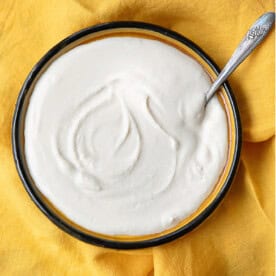
Homemade Kashk
Equipment
- Nut milk bag
- Food Processor
Instructions
- Mix the whole milk yogurt with 2 cups water in a pot and put over medium to high heat to bring to a simmer. This will be about 20-30 min and you’ll have separation/curdling.
- Then, simmer on medium to low heat for 2 hours and 30 minutes and the mixture will come together again.
- Raise the heat back to medium-high for another 30 minutes. You’ll know it’s ready when it becomes a beige color and gets solid.
- Turn the heat off and let the mixture cool then transfer to nut milk bag. Squeeze out all excess liquid. You'll be left with a solid lump.
- Break the lump into pieces and place it in the food processor with half cup of water, salt, and blend until creamy. Adjust salt to taste.
- Store in a jar and refrigerate for up to 2 weeks.
Video
Notes
-
- Quality Yogurt: Use high-quality, full-fat whole milk yogurt. The richness of the yogurt directly impacts the texture and flavor of the kashk.
-
- Consistent Stirring: Stir continuously while bringing the yogurt mixture to a simmer to prevent it from sticking to the bottom of the pot and burning. Use a wooden spoon or a heat-resistant spatula for best results.
-
- Temperature Control: Maintain medium-low heat during the simmering process to avoid scorching the yogurt. Consistent heat is crucial for the proper transformation of the yogurt.
- Use a Heavy-Bottomed Pot: A heavy-bottomed pot distributes heat evenly and helps prevent hot spots that can burn the yogurt.
- Blend for Creaminess: After straining, blend the kashk with water and salt in a good quality food processor to achieve a smooth and creamy texture. Adjust the water amount for your desired consistency.
- Nut Milk Bag for Straining: Use a nut milk bag for efficient straining. It’s durable and fine enough to capture all the solid parts, ensuring a smooth kashk.
- Monitor the Color: Keep an eye on the color change during cooking. The mixture should turn a beige hue, indicating it’s ready to be strained.
- Cool Properly: Allow the kashk to cool for about 30 minutes after cooking before straining. This makes the process easier and ensures a smoother texture.
-
Squeeze Well: When using the nut milk bag, ensure you squeeze out as much liquid as possible. This helps achieve the correct consistency for the kashk.
Nutrition
Nutrition information is automatically calculated, so should only be used as an approximation.
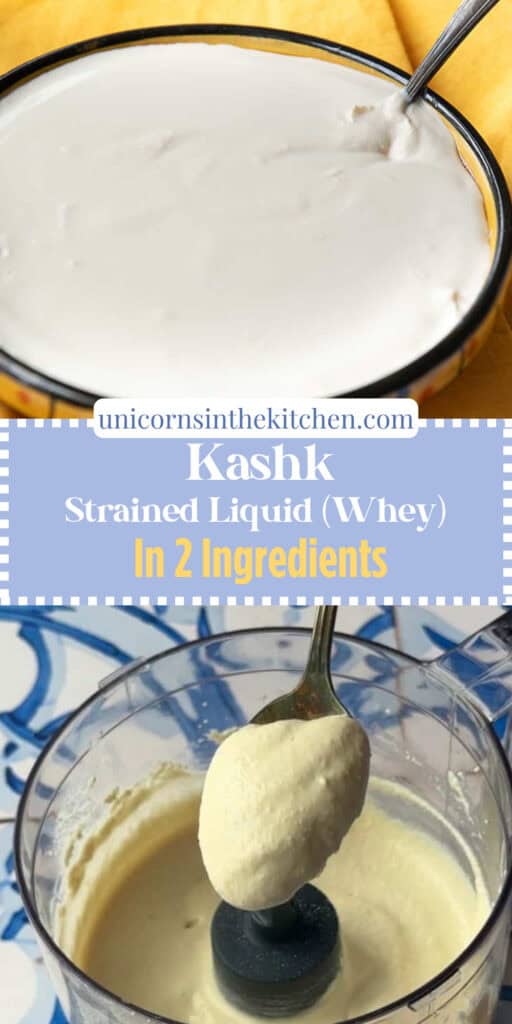

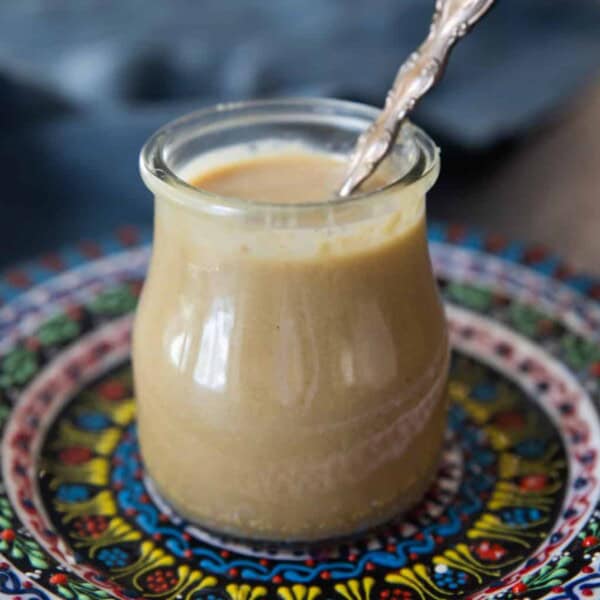

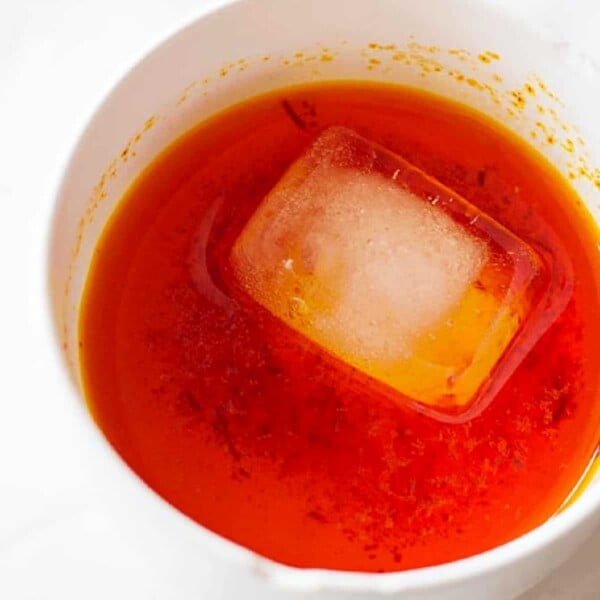









Thanks. Such a delicious creamy rich and flavorful recipe. So easy to follow your step by step detailing.
I really appreciate your step-by-step directions and pictures to make this fantastic homemade kashk. I also appreciate your suggestions for using it.
This is the best tutorial I’ve found for making jameed, love the step-by-step process photos. Very easy to follow along with, thanks so much!
Not only was this quick and easy to make but wow, talk about amazing flavor. This sauce is a winner and cannot wait to make it again. Thank you so much!
This was such a quick and easy recipe that does not disappoint! Turned out creamy, rich and delicious; definitely, a new favorite recipe!